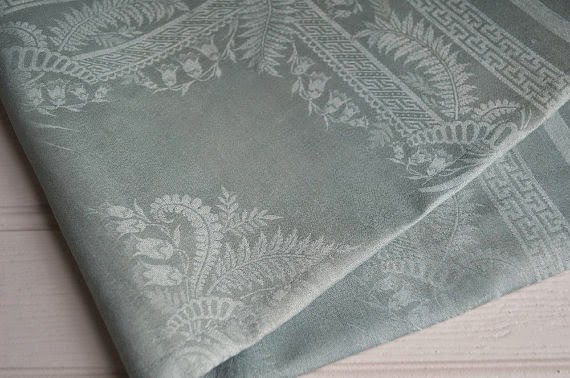Lengths of lace, collars and cuffs and as the title of this post implies, buttons and bows!
Gorgeous chunky mother of pearl shell buttons, which look just as good from the back as from the front! These ones will look amazing to the centre of a linen cushion I think.
Then there are really unusual buttons made from soutache silk cord. Some are woven into knot-like shapes with rosettes to the centre, some can be quite intricate and fussy, but then there are gems like these - bottle green silk cord wound into a dome, almost looking like little beehives. Simple yet stunning. These are from the 1930s and have survived so very well.
And not forgetting the bling and sparkle pieces! I acquired a box of lace and trims from the estate of a Scottish lady whose sister had been companion to a French widow in Quebec during the 1920s and 30s. When she left to return to Scotland her employer gave her lots of interesting things to bring home with her. In amongst the lace were several envelopes containing the most stunning little diamante pieces.
Tiny gold tone metal bows studded with diamante, just waiting to adorn an evening jacket.
And the tiniest little flower head buttons you ever did see, each one made up of 16 diamante studs all ready to embellish an evening gown.
It seems that just about every house had its box of lace pieces, but also a button box. Or as I discovered recently about 15 button boxes! The mother of a good friend of mine was a model for some of the leading fashion houses in London during the 1930s and 40s, a really glamorous girl in her day. She passed away last year and I have had the privilege of helping her daughters sift through the suitcases and boxes of treasures she had kept from those days. Buttons, buckles, more buttons and even more buttons........
Groups of vintage black glass buttons with copper highlights.
Diamante buckles just waiting to be used.
Soutache frogging from Harrods, still with its original little label!
Black glass buttons that look as though they have gold detailing, but it is just the very reflective finish that gives them this allure.
So McBurney and Black was always intended to be a source for vintage Irish linens, but it is changing by the day! Still the focus is on linen, but it is hard to resist these amazing haberdashery items when they appear!
















































